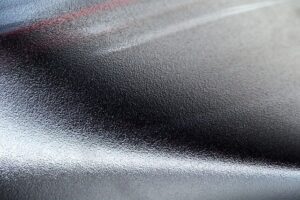 Scientists from Latvia made a number of experiments using fiber optic technology for monitoring the condition of the road surface. They chose special FBG sensors that can collect data about roadway changes, like changes in the strain and temperature. These fiber optic solutions that also include applying fiber Bragg gratings (FBGs) will help in designing reliable roads and planning for road repairs.
Scientists from Latvia made a number of experiments using fiber optic technology for monitoring the condition of the road surface. They chose special FBG sensors that can collect data about roadway changes, like changes in the strain and temperature. These fiber optic solutions that also include applying fiber Bragg gratings (FBGs) will help in designing reliable roads and planning for road repairs.
The process of pavement destroying can’t be completely stopped. However, we can apply more strong materials and repair small cracks in the structure at the early stages. That is why we require new monitoring methods and the most effective ways are fiber optic solutions.
According to the research, the fiber sensors could define the roadway defects and measure the load on the site. So with the help of fiber optic sensors, it will be possible to consider the pressure and vibration created by transport in the area and strengthen the coverage in the right places.
Scientists chose fiber optic systems because fiber optic sensors are highly sensitive and do not require a power supply. Fiber sensors can be installed in an existing fiber optic network and receive data remotely. The basis of fiber optic sensors contains fiber Bragg gratings (FBGs). It is a section in the middle of an optical fiber, where the refractive index of light has been changed using ultraviolet radiation. As a result, such a section always reflects radiation only in a very small part of the spectrum and transmits the rest of the light without loss. The fiber Bragg grating (FBG) can be formed so that the wavelength of the reflected light depends on changes in temperature, pressure, or other physical aspects. Because of these parameters, fiber Bragg grating sensors are effective for application.
Scientists placed two types of fiber optic sensors on one of the highways during its renovation. The first one measured deformations in construction, the other detected temperature. Since unprotected fiber sensors are quite fragile, they were packed in composite and ceramic tubes. The first test demonstrated that the most precise strain measurements are possible when the load is placed exactly at the location of the fiber optic sensors. Researchers also specified that temperature plays a crucial role in the deformations of the asphalt. And the final key aspect of the tests with fiber optic technology was monitoring real traffic and defining the truck’s quantity.
Finally, the experiments demonstrate that fiber optic sensors can measure the deformations of the roadway with sufficient accuracy. By applying FBG sensors specialists can determine the moment when the limit of permissible deformations will be exceeded in the selected area. That will definitely help in designing new roads and repairing the existing ones.
Optromix is a fast-growing vendor of fiber Bragg grating (FBG) product line such as fiber Bragg grating sensors, for example, FBG strain sensors, FBG interrogators and multiplexers, Distributed Acoustic Sensing (DAS) systems, Distributed Temperature Sensing (DTS) systems. The company creates and supplies a broad variety of fiber optic solutions for monitoring worldwide. If you are interested in structural health monitoring systems and want to learn more, please contact us at info@optromix.com


 Common communication channels apply fibers in
Common communication channels apply fibers in  Nowadays
Nowadays Recently a team of scientists from an American research center has presented a
Recently a team of scientists from an American research center has presented a  A dramatic increase in the application of composite materials, involving aerospace technology, as well as other fields that need high reliability of structures, for instance, oil production, building industry, etc., makes the task of
A dramatic increase in the application of composite materials, involving aerospace technology, as well as other fields that need high reliability of structures, for instance, oil production, building industry, etc., makes the task of  Researchers-manufacturers of
Researchers-manufacturers of  A team of researchers presents a
A team of researchers presents a  Distributed
Distributed  Nowadays
Nowadays  Fiber Bragg grating
Fiber Bragg grating